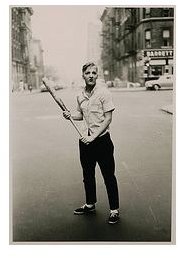Artistic Women Photographers: Breaking Down Creative Barriers
Documentary and Portraying the Body
Diane Arbus and Judy Dater
Diane Arbus
Two women photographers who stretched the bounds of art photography were Diane Arbus and Judy Dater. Diane Arbus (1923-1971) came from a wealthy family and at just thirteen she met Allen Arbus, who worked at her parents’ department store. Allen Arbus married Diane when she turned 18 and they worked as fashion photographers. Diane Arbus took on the role of style and art director while Allen Arbus was at the camera, but they both took credit for the work. Diane got her own camera in 1956 and she began to make her own pictures. By 1959 the couple had separated but they remained on good terms, with Allen always supportive of Diane’s work. In 1962 and 1966 she was awarded Guggenheim fellowships which allowed her to pursue her more unorthodox work. Her images took on a style where the subject is always looking directly into the camera; the background tends to be fairly minimal whether inside or outdoors and so that all attention is focused completely on the subject. The subjects she chose were people who were extraordinary, unusual looking or living on the margins of society. Susan Sontag writes in On Photography that Arbus’ images that;
“she seems to have enrolled in one of art photography’s most vigorous enterprises – concentrating on victims, on the unfortunate- but without the compassionate purpose that such a project is expected to serve. Her work shows people who are pathetic, pitiable, as well as repulsive, but does not arouse any compassionate feelings” (Sontag, S. 1979:33)
Arbus’ work is often uncomfortable to look at, as it seems to exploit the subject with the object of making the viewer of the work collusive in looking at the final image. Arbus pushed the boundaries of portraiture and documentary photography and is one of the few artistic women photographers who have made images that have become iconic. Arbus committed suicide in 1971 after a bout of depression.
Judy Dater
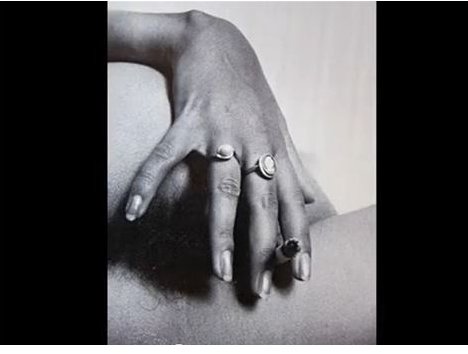
Judy Dater (born 1941) studied photography at San Francisco University; she gained a B.A.in 1963 and an M.A in 1966. She studied with Jack Welpott, whom she married in 1971. Dater collaborated with Welpott on the book project Women and Other Visions and often they use the same models for their various photography projects. Dater used the camera to try to “penetrate core psychologies” (Welles, E. 2004) and her images were intended to provoke thought in the viewer and not to be looked upon with passivity. Arbus placed her subjects before the viewer and seemed to make them more extraordinary and yet no more penetrable, Dater wants to get to the core of her subject and photographs in an attempt to show the viewer as much as possible. Dater’s images are aesthetically beautiful to look at but they use photography, staging, objects and poses to jar the viewer into thinking. Her images are certainly shot from a feminist perspective, and question the male gaze. Dater shows women who are controlled, comfortable with their bodies, confident and who break the passive stereotypical image of woman. Dater continues to work in photography today and has many major exhibitions. Her current work concentrates on computer art, installation and performance.
Celebrity Photographer’s
Linda McCartney & Annie Liebovitz
Linda McCartney
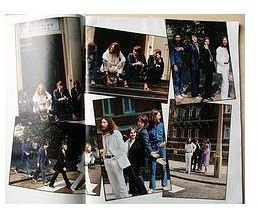
Linda McCartney (1941-1998) and Annie Liebovitz (1949 - ) both have photographed celebrities. McCartney started out as a receptionist for a society magazine but wanted to be a photographer. Her big break came when in the mid 1960s McCartney, then Eastman, stole an invitation to a Rolling Stones press gathering on a yacht. McCartney was the only photographer allowed on the boat and she got her first exclusive pictures. McCartney continued to take pictures and documented the 1960’s and 1970s through Rock and Roll celebrities such as Jimi Hendrix, The Who, The Beatles and The Rolling Stones. Linda met Paul McCartney when photographing an assignment on the Swinging Sixties for a magazine and they were married in 1969. Linda McCartney’s portraits of celebrities are images that are understated; they capture unexpected moments where the celebrities are not necessarily posing for the picture. The images are more in line with a documentary style. Most of McCartney’s images are taken on location rather than in a studio or a set-up, staged space. The naturalistic style of McCartney’s images captures the personality of her subjects and those images have a real warmth that suggests a comfortable, close relationship with the photographer herself.
Annie Liebovitch
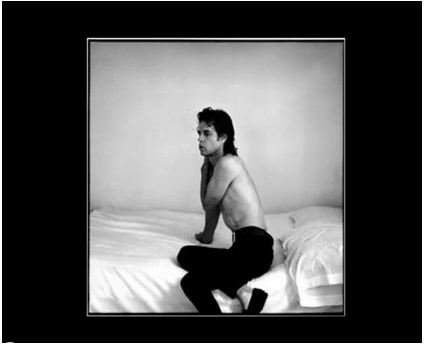
Annie Liebovitz, in stark contrast to McCartney, takes images that are always staged and set up to create a stylistic vision of how she wants to portray the celebrities. Liebovitz has been making portraits of celebrities since the 1970s and continues to do so today. One of her most recent and most famous portraits was an image of The Queen in 2007. Leibovitz has worked for Vanity Fair and produced famous images such as Demi Moore naked and pregnant and John Lennon and Yoko Ono with Lennon naked and curled around a clothed and confident Yoko. This particular image was actually the last image taken before John Lennon’s death in 1981. The Images that Liebovitz takes have an impact as they show something that is unexpected from the participants in the image. Liebovitch is now one of the most celebrated celebrity photographers and her most contemporary work has included an image of Miley Cyrus covered only in a white sheet wearing red lipstick. Many thought that this image was “too sexy” for the Disney Star of “Hannah Montana.” This image and many of Liebovitz’s other images have been a cause célѐbre in the media and prove that Liebovitz still is pushing the boundaries of celebrity photography today.
Contemporary Conceptual Photography
Sarah Lucas and Corinne Day
Sarah Lucas and Corinne Day are both contemporary photographers who have used very different methods to subvert how images of women are used in the photograph.
Sarah Lucas

Sarah Lucas was born in 1962 and was hailed as part of the group of “Young British Artists” who came to fame in 1990s. Lucas’ art has always challenged sexual stereotypes and Lucas’ many self-portraits always show her wearing trousers and a baggy top and posing in a masculine way. Her photos are set-up staged images that tend towards bawdy jokes and a bluntness about sexuality and imagery that can jar the viewer into re-evaluating how sexuality is presented in photography. Lucas used the pop culture of the 1990s as a basis for some of her imagery and turned tabloid photo-stories into avant-garde art practice. This self-portrait of Lucas’ is typical of how she represents herself in her images; there is no tendency to make the image aesthetically beautiful, only to challenge conventional ideas of how an image should be. Lucas works with various mediums to make her art and has created sculptures; one example is Martyr in 2008, which was included in the Penetralia exhibition in Mayfair, London.
Corinne Day
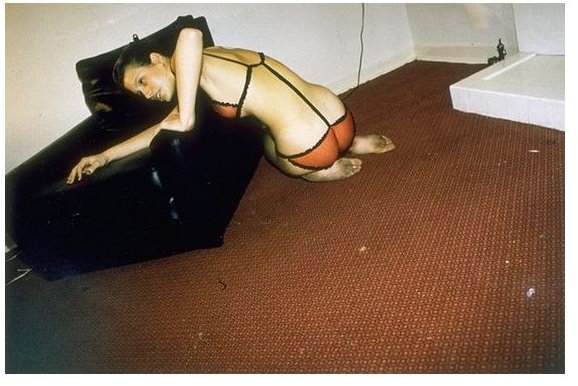
Corinne Day (born 1965) is one of the few contemporary artistic woman photographers who has used the “artless” snapshot to create very personal imagery. Day began her working life as a fashion model and had begun to take pictures of her model friends for their portfolios. Her images were spotted by The Face magazine in London and soon she was taking images that aimed at subverting the fashion photography genre and show the truth behind the glamour. Day actually decided against using images that she had taken of Kate Moss to further her career as a photographer. She chose instead to publish a personal chronicle of her life in the 1990s. Images such as Tara sitting on the loo, 1995 used the snapshot to create intimate portraits of herself and her model friends. The work is reminiscent of Larry Clark’s early images of Tulsa and Nan Goldin’s work. All three artists have used themselves, their friends and their lives as their art and captured it through snapshot style photography. Day published Diary in 2000; the work follows her life after she has discovered she has a brain tumour. The images depict her hospitalization and recovery and show her life in intimate detail. Corinne Day continued to fight with brain cancer until her death in August 2010.
References
-
Art Scene: Judy Dater at the Micheal Dawson Gallery by Elenore Welles
-
Fashion Windows: Miley Cyrus Scandal: Is it For Real or is it For Fake?
-
Sontag, Susan, On Photography, Penguin Books Ltd, London, 1979
-
Image Credits:
Image One: Teenager with a Baseball Bat NYC, 1962 by Diane Arbus Flickr 16 Miles of String Photostream by rightee under CC BY-SA 2.0
Image Two: Judy Dater <em>Women’s Hand with Rings and Cigarette</em> from YouTube Qadesh86 Women and Other Visions - Judy Dater
Image Three: The Making of the Abbey Road Album Cover by Linda McCartney Flickr dou_ble_you Photostream by rightee under CC BY-SA 2.0
Image Four: Mick Jagger by Annie Liebovitz from YouTube Tonidenero Tribute to Annie Liebovitz
Image Five: Sarah Lucas Self-Portrait Fighting Fire With Fire, 1996 from YouTube artpopulus
Image Six: Corrine Day Photograph from Niall’O Blogspot
-
Cotton, Charlotte, The Photograph as Contemporary Art, Thames & Hudson, London, 2007
